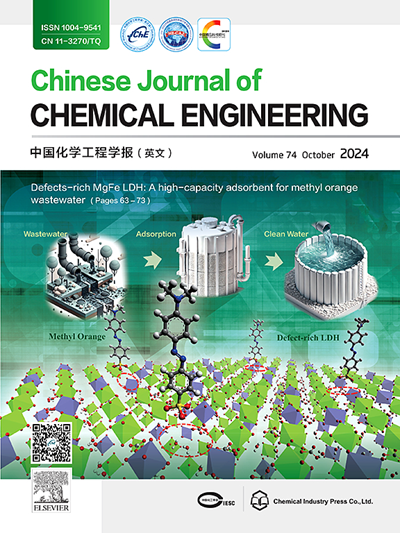Migration/transformation characteristics of heavy metals and polycyclic aromatic hydrocarbons in the co-liquefaction treatment of pig manure and lignocellulosic biomass
IF 3.7
3区 工程技术
Q2 ENGINEERING, CHEMICAL
引用次数: 0
Abstract
The migration/transformation characteristics of heavy metals and polycyclic aromatic hydrocarbons (PAHs) during the co-liquefaction of pig manure and rice straw/wood sawdust were explored in this study. More than 87% of the heavy metals in feedstocks were enriched in hydrochars. The decreased proportion of active heavy metals in the hydrochars suggested partial passivation of the heavy metals. The pollution degree and risk of heavy metals were significantly mitigated from high and considerable levels in pig manure to moderate and low levels in hydrochar, respectively. Compared with commercial diesel, bio-oil products still contained an undesirable amount of heavy metals. PAHs were re-synthesized during liquefaction, with a net synthesis amount of 29.65–73.98 mg·kg−1. Moreover, the PAHs mainly existed in bio-oils, with a content of 57.32–132.33 mg·kg−1 and a toxicity equivalent of 3.25–8.19 mg·kg−1. Compared to pig manure, the hydrochars presented a lower content of PAHs (1.76–3.53 mg·kg−1 versus 3.73 mg·kg−1) and a smaller toxicity equivalent (0.14–0.22 mg·kg−1 versus 0.26 mg·kg−1). Interestingly, introducing lignocellulose (especially for rice straw) during the liquefaction of pig manure further mitigated the pollution degree/risk of heavy metals and PAHs. Overall, hydrochar reached a safe utilization level, while bio-oil products needed further clarification.

重金属和多环芳烃在猪粪和木质纤维素生物质共液化处理中的迁移转化特征
研究了猪粪和稻秆/木屑共液化过程中重金属和多环芳烃(PAHs)的迁移转化特征。原料中87%以上的重金属富集在烃类中。活性重金属在烃类中所占比例降低,表明重金属部分钝化。猪粪中重金属污染程度和重金属污染风险分别由较高和相当水平显著降低至中等和较低水平。与商品柴油相比,生物油产品中重金属含量仍然超标。多环芳烃在液化过程中被重新合成,净合成量为29.65 ~ 73.98 mg·kg−1。多环芳烃主要存在于生物油中,含量为57.32 ~ 132.33 mg·kg−1,毒性当量为3.25 ~ 8.19 mg·kg−1。与猪粪相比,水炭的多环芳烃含量较低(1.76 ~ 3.53 mg·kg−1比3.73 mg·kg−1),毒性当量较低(0.14 ~ 0.22 mg·kg−1比0.26 mg·kg−1)。有趣的是,在猪粪液化过程中引入木质纤维素(特别是稻草)进一步降低了重金属和多环芳烃的污染程度/风险。总的来说,碳氢化合物达到了安全利用水平,而生物油产品需要进一步澄清。
本文章由计算机程序翻译,如有差异,请以英文原文为准。
求助全文
约1分钟内获得全文
求助全文
来源期刊

Chinese Journal of Chemical Engineering
工程技术-工程:化工
CiteScore
6.60
自引率
5.30%
发文量
4309
审稿时长
31 days
期刊介绍:
The Chinese Journal of Chemical Engineering (Monthly, started in 1982) is the official journal of the Chemical Industry and Engineering Society of China and published by the Chemical Industry Press Co. Ltd. The aim of the journal is to develop the international exchange of scientific and technical information in the field of chemical engineering. It publishes original research papers that cover the major advancements and achievements in chemical engineering in China as well as some articles from overseas contributors.
The topics of journal include chemical engineering, chemical technology, biochemical engineering, energy and environmental engineering and other relevant fields. Papers are published on the basis of their relevance to theoretical research, practical application or potential uses in the industry as Research Papers, Communications, Reviews and Perspectives. Prominent domestic and overseas chemical experts and scholars have been invited to form an International Advisory Board and the Editorial Committee. It enjoys recognition among Chinese academia and industry as a reliable source of information of what is going on in chemical engineering research, both domestic and abroad.
 求助内容:
求助内容: 应助结果提醒方式:
应助结果提醒方式:


